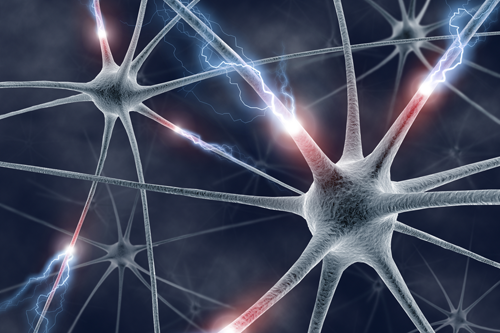 In my previous post about how your brain codes information in neural pathways, you learned that you can change your brain. Through a process of severing negative neural pathways and creating new ones with more positive associations, Neuro-Linguistic Programming (NLP) can help reduce feelings of tension or disturbance. Getting ready for a job interview? Have to spend time with your in-laws? NLP offers a wonderfully simple technique for reducing the emotional charge in any situation.
In my previous post about how your brain codes information in neural pathways, you learned that you can change your brain. Through a process of severing negative neural pathways and creating new ones with more positive associations, Neuro-Linguistic Programming (NLP) can help reduce feelings of tension or disturbance. Getting ready for a job interview? Have to spend time with your in-laws? NLP offers a wonderfully simple technique for reducing the emotional charge in any situation.
Changing the Pictures in Your Mind
You’re not aware of it, but your brain constantly makes pictures that your mind interprets and causes what you feel. When you change the picture, you change the cascade of reactions that follow. A simple procedure of playing with the submodalities (specific elements that alter the image) of the picture will change what you experience. The next time you notice emotional discomfort, try this:
- Sit in a quiet space. Close your eyes and allow the disturbing feeling to come into the present moment. Welcome it as best you can.
- Notice the picture that forms in your mind. (This may be real or abstract.)
- Imagine you can step back out of the picture and see yourself in it.
- If the picture is in color, drain the color out until it’s in black and white. (If it’s already in black and white, drain out one color until the picture is solidly white or black.)
- Push the picture as far from you as it will go.
- Shrink the picture down by 50%.
- Imagine you’re looking at the picture through the lens of a camera. Slide the lens until the picture is blurry.
- Imagine there’s a dimmer in your head. Turn it down as far as it will go until there is as little light as possible.
- Notice the shape of the picture; change it to any other shape of your choice.
- Shrink the picture down by 50%.
- Notice where the picture is located in space (front, behind, left, right); rotate it 180 degrees.
- Shrink the picture as far down as possible.
- Imagine you can destroy this speck in any way that feels right to you; do it now.
- When the speck is gone, take a deep breath in, release it, and open your eyes. Take a look around the room. Notice any differences in your mind or body.
Changing How You Feel
Now an empty space exists where that old picture used to sit. It’s time to replace it with a new picture:
- Think of a time you felt really, really good about yourself and/or your life.
- Close your eyes and allow the good feeling to come into the present moment. Welcome it.
- Notice the picture that forms in your mind. Allow it to fill in as much as possible to the size of an Imax movie screen, in bright color. Find the dimmer switch and turn up the light. Focus the picture so it’s very clear.
- Notice the feeling this picture creates. Identify where you feel it most in your body.
- Allow yourself to notice the size, shape, and color of the feeling.
- All feelings spin: forward, backward, clockwise, or counterclockwise. Notice which way this feeling spins. Gently increase the spinning. Increase it again by 50%. And again and again.
- Bring your attention back to the picture. Bring it as close to you as possible. Count to three and step into the picture.
- Imagine you are in a movie scene and allow it to play. Notice what it’s like to experience the scene looking out from these eyes and in this body. What do you hear, smell, taste?
- When you have fully experienced the scene, take a deep breath in and then release it. Choose a word that represents what you feel in this moment. Repeat it to yourself 10 times and open your eyes.
When using NLP, frequently check in and ask yourself, “How does this feel?” For most people the process I just described will bring relief. A small percentage of people, however, are calibrated differently; making something bigger, rather than shrinking it, feels better. If you reach a step where an adjustment makes you feel more versus less disturbed, try reversing it. For example, in the first exercise bring the picture closer instead of pushing it away. One thing NLP underscores is that you have more control over your mind than you may think you do. Practicing the steps suggested here can help you reduce stress and, more important, teach you how to change the way you feel anytime you wish.



